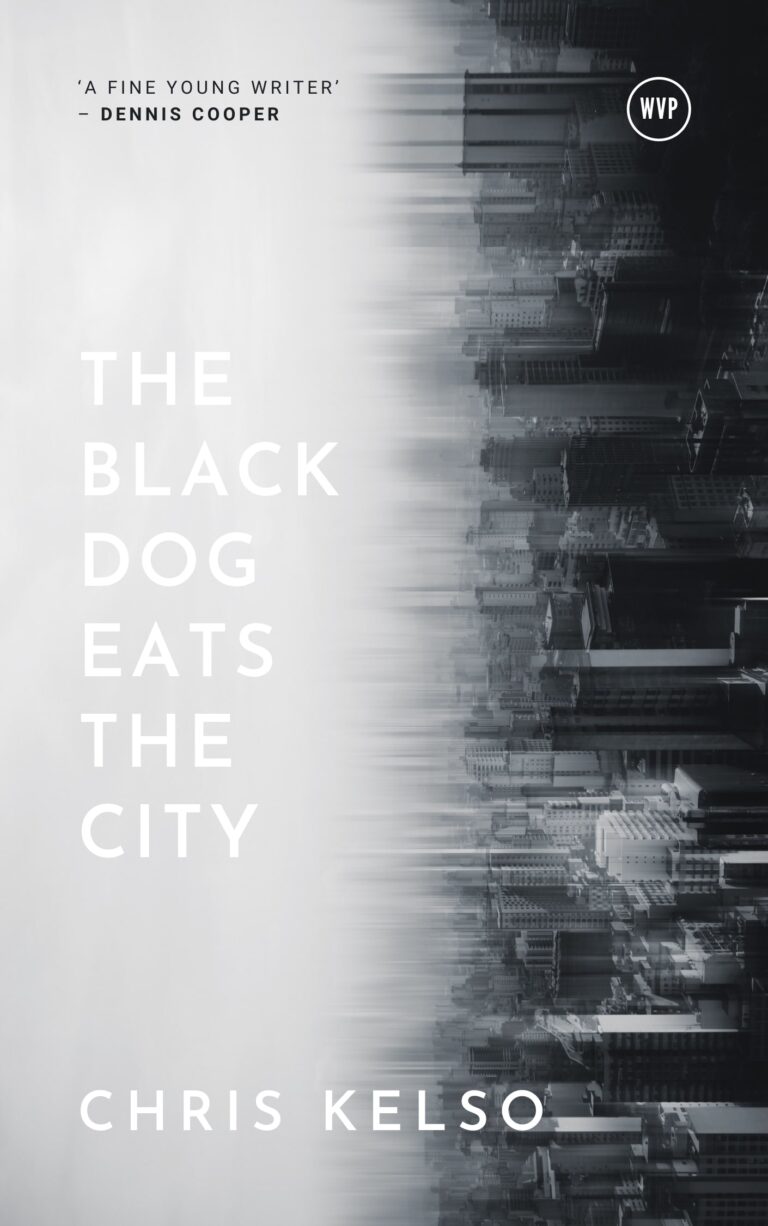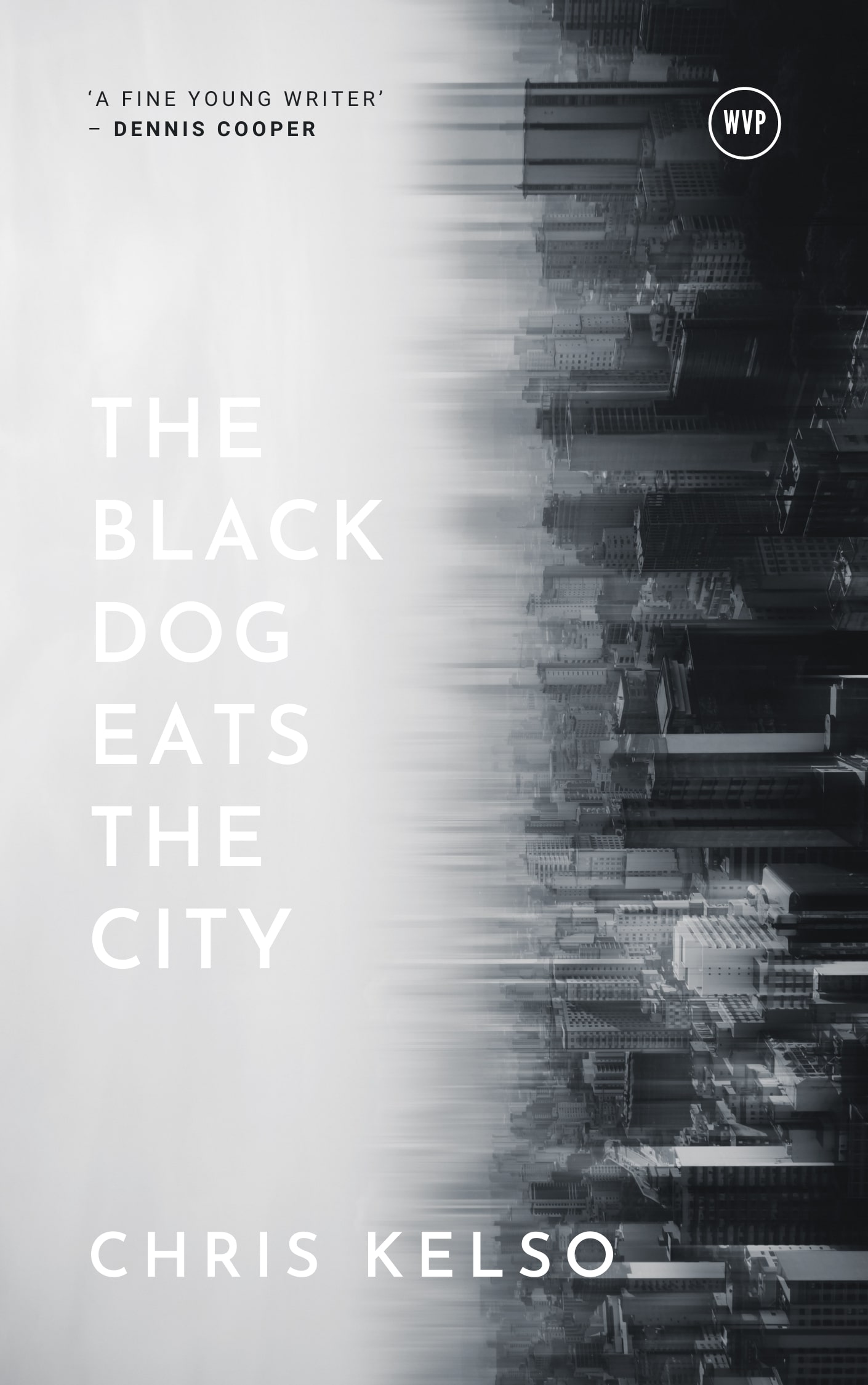Author Chris Kelso cites William Burroughs as an influence, and Burroughs’s nihilistic tone is palpable among Kelso’s cast of hopeless junkies and impotent men in THE BLACK DOG EATS THE CITY, a strange, often nightmarish, ride through a post-apocalyptic landscape. The Black Dog is a virus that causes terrible depression, often ending in suicide. The story jumps in after The Black Dog has reduced the 14th Ward of Wire City city to a ghost town, populated by soulless human monsters. Some citizens combat the disease by downloading their consciousness into computers, a kind of “reversible” suicide. Others scour a wrecked Blade Runner-esque landscape searching for a fabled cure for The Black Dog virus.
Kelso’s tale is disjointed and jarring, which helps amp up the creepy atmosphere. Reading THE BLACK DOG ATE THE CITY is like walking through a funhouse at a low-rent traveling carnival. The footing is uneven, it’s hard to see clearly, and the whole thing feels like it might fall apart at any moment. But it’s a thrill ride, for sure. It’s hard to define the plot of the book–there’s no hero and nothing to cheer about–just downtrodden people looking for respite from indefatigable suffering. The happiest possible ending is death. If Kelso’s intent was to create an unsettling read he has very much succeeded. The closest literary relatives to THE BLACK DOG EATS THE CITY are the bizarro works of Carlton Mellick III, the self-destructive fiction of Brett Easton Ellis, and the surreal horror of Franz Kafka. Kelso is a gifted writer who clearly has the skills (if he care to) to craft something more cohesive and accessible. Once he gives readers a story to follow and a protagonist to cheer for there will be no stopping him.
Clocking in at just over 75 pages, Chris Kelso’s THE BLACK DOG EATS THE CITY is a novella that serves as an allegory for depression, dashed dreams, bleak futures, and general hopelessness. Fans of dark surrealism will appreciate Kelso’s eerie prose.
~Rob Errera for IndieReader


